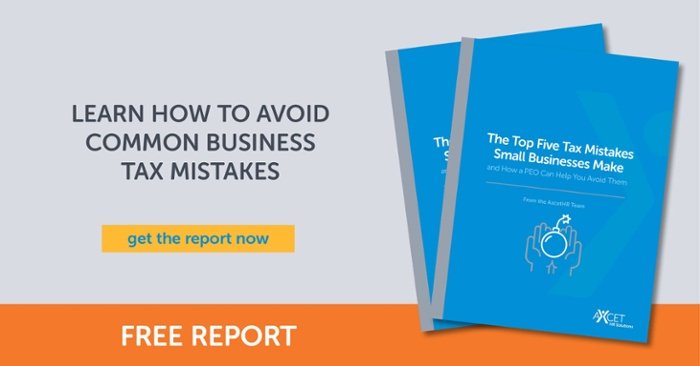By
Jo McClure, CPP
on
Oct
29,
2018
5 min read
0 comment(s)

The Tax Cuts and Jobs Acts Law (TCJA) – a sweeping tax overhaul that passed in December 2017 – includes trillions of dollars in tax cuts and benefits for both workers and business owners. The changes took effect in 2018 for taxes that will be reported by April 2019 and will expire for individuals by the end of 2025. Most of the corporate provisions, however, are permanent.
Impacting both corporate and individual taxes, the new law most notably:
Significantly, the percentage of taxpayers who itemize should sharply drop, given the new substantially higher standard deductions of $12,000 versus the previous $6,350 for single filers and $24,000 instead of $12,700 for married couples filing jointly. Itemizing, of course, is only advisable if your deductions exceed your standard deduction.
Generally speaking, the massive Internal Revenue Code amendments lower and simplify taxes for business owners and corporations. Watch this informative webinar to find out how the Tax Cuts and Jobs Act has impacted payroll processing.
Here are the key takeaways from TCJA for these groups:
TCJA changes lowered the tax burden of owners, partners, and shareholders of S-corporations, LLCs, sole proprietorships, and partnerships by a first-ever 20 percent deduction. These classifications are known as pass-through organizations because owners pay their share of business taxes through their individual tax returns. Now, these business owners may be able to deduct up to 20 percent of their qualified income, that is, the net income directly generated by their businesses.
The 20 percent deduction is prohibited for everyone in a service business unless their taxable income is less than $315,000 (married) and $157,500 (single).
The new tax code slashed the corporate rate from 35 percent to 21 percent and repealed the AMT on corporations. The new rate also is a flat tax, so it’s the same for all C corporations, contrary to previous corporate tax rates of 15, 25, 34, and 35 percent. Because the 15-percent tax rate applied to net income that equaled between $0 and $50,000 and because most corporations report incomes higher than $50,000, most corporations will see a lower tax burden under the new law.
Some deductions businesses have taken for decades have been either eliminated or restricted. For example:
If you use part of NOL for one year, the remainder may be carried over to future years. So, if you record $100,000 of NOL one year and make $100,000 the next year, you may reduce the profitable year’s taxable income by $80,000 – or 80 percent of your prior year’s NOL. You would still have $20,000 of the initial NOL to apply to any future years you report another NOL.
Related Reading: How the Tax Cuts and Jobs Act Affects Businesses
4. Changes in Depreciation

5. Changes to Fringe Benefits
The TCJA law generally eliminated the deduction for entertainment or qualified transportation, but there are exceptions. Additionally, qualified moving expense reimbursements, bicycle commuting reimbursements, and employee achievement awards are now treated differently. To learn more, visit the IRS site's article Tax Reform Brings Changes to Fringe Benefits.
6. Farmers & Ranchers
Farmers and ranchers are also impacted by TCJA. There are changes relevant to net operating losses, qualified business income deductions, accounting methods, and depreciation. For the details, download our primer, How Tax Reform Affects Farmers and Ranchers.
Many of these changes stand to benefit small businesses, but owners may have to make financial strategy adjustments to take full advantage of them.
NOTE For a full and complete review of how the Tax Cuts and Jobs Act impacts businesses visit the IRS Tax Tip page: Tax Cuts and Jobs Act: A comparison for business.
The top five TCJA individual changes include:
The law retained seven tax brackets but lowered the rate for five of them. These lower rates will expire in 2025 unless Congress votes to extend them. TCJA cut the highest rate from 39.6 percent to 37 percent. And while the bottom rate remains 10 percent, it now covers more income. Read more from the IRS here.
The IRS has recommended everyone perform a paycheck checkup to ensure proper federal tax withholding - here's how. Also, Jo McClure, director of payroll administration, weighs in on how the Tax Cuts and Jobs Act may have impacted your state withholding.
The new law doubled to $2,000 the credit for children under 17. This credit is now available to high earners because TCJA raised the income threshold under which filers may claim the full credit to $200,000 for single parents – up from $75,000 – and to $400,000 for married couples – up from $110,000.
Beginning with mortgages obtained in 2018, first- or second-home buyers may deduct the interest only on debt up to $750,000, down from $1 million previously. The interest on home equity loans is no longer deductible.
TCJA changes significantly reduce the odds that you will owe the AMT for tax years 2018 through 2025. And if you do have to pay it, chances are you will owe less than you would have under the prior law.
The new tax code eliminates the mandate to buy health insurance beginning in 2019, at which time people who do not have minimum essential coverage no longer will have to pay a penalty. The change takes effect with taxes filed in 2020. For reference, IRS data shows about 4 million taxpayers paid the penalty tax for the tax year 2016.
Let us know what you think...